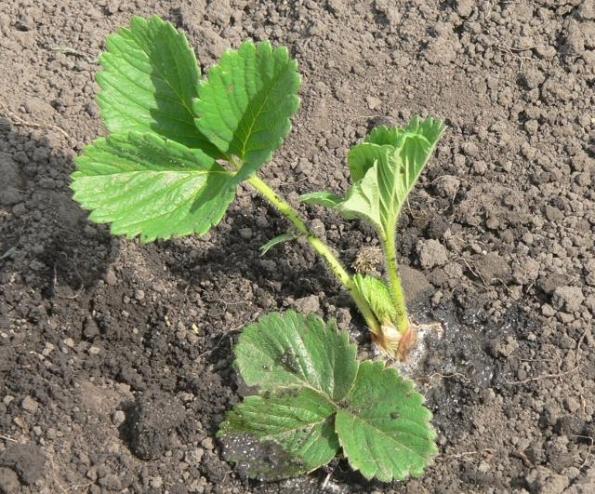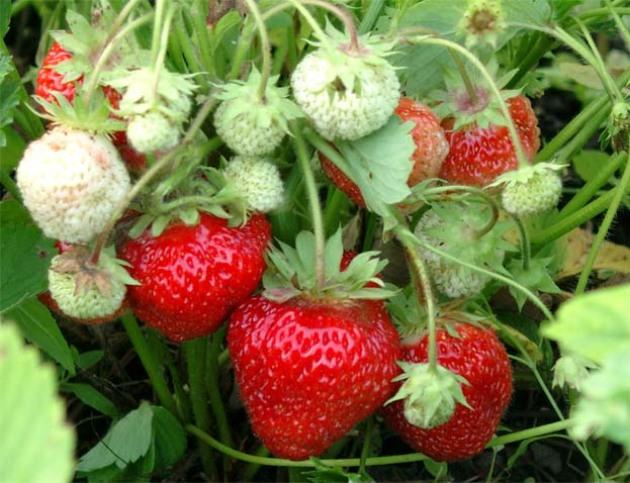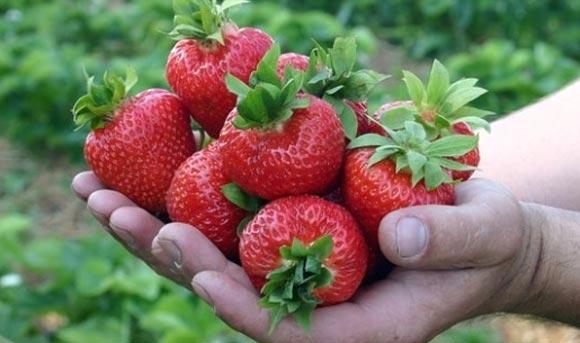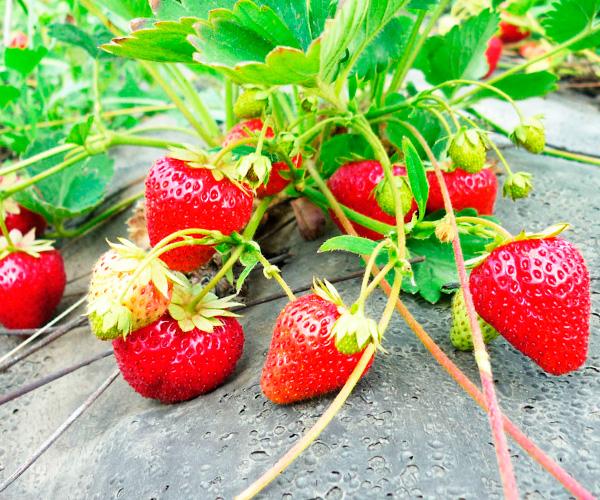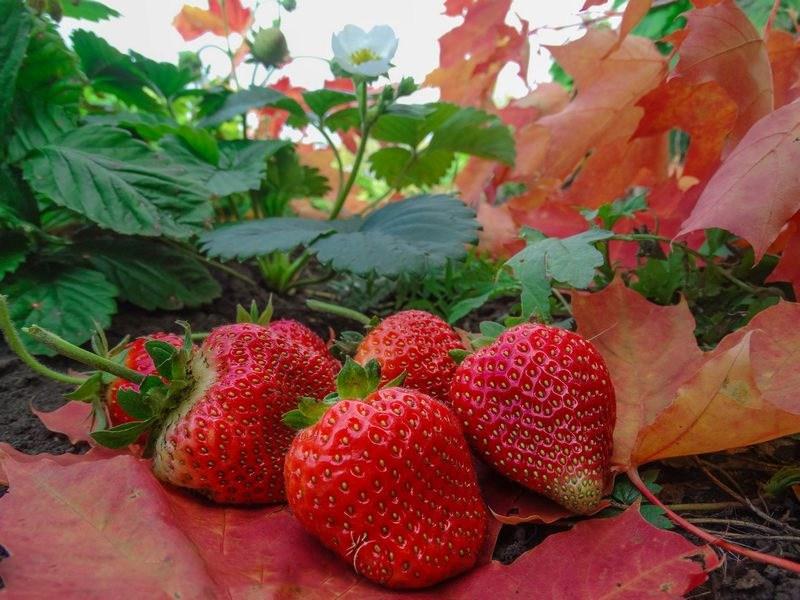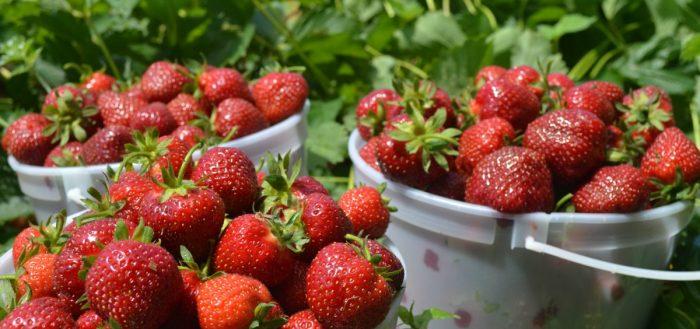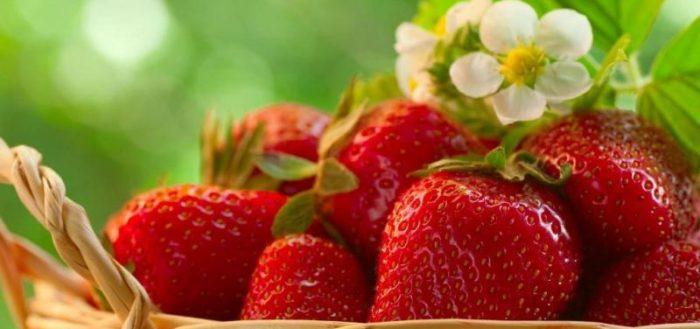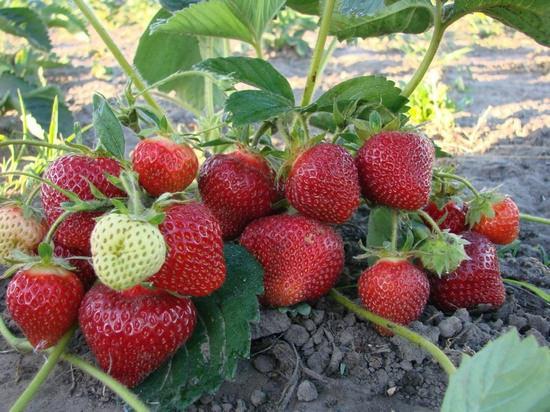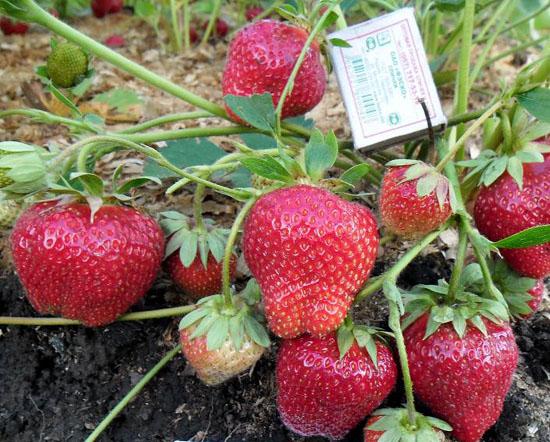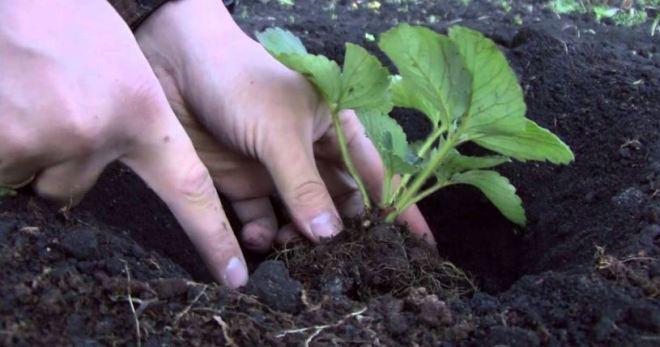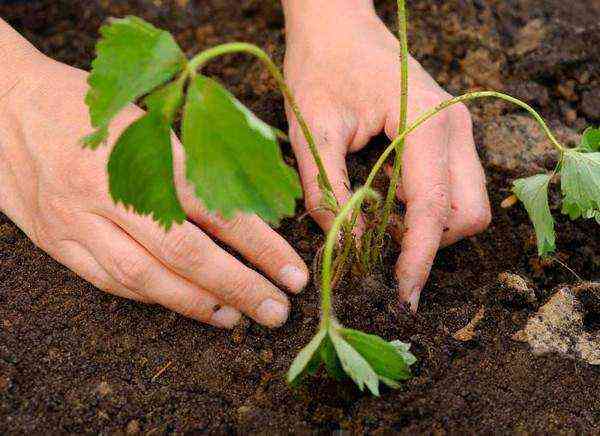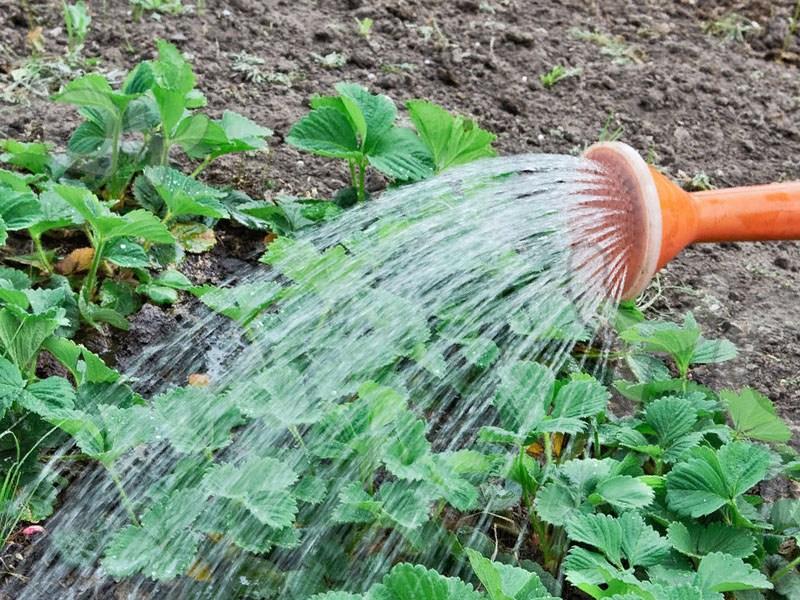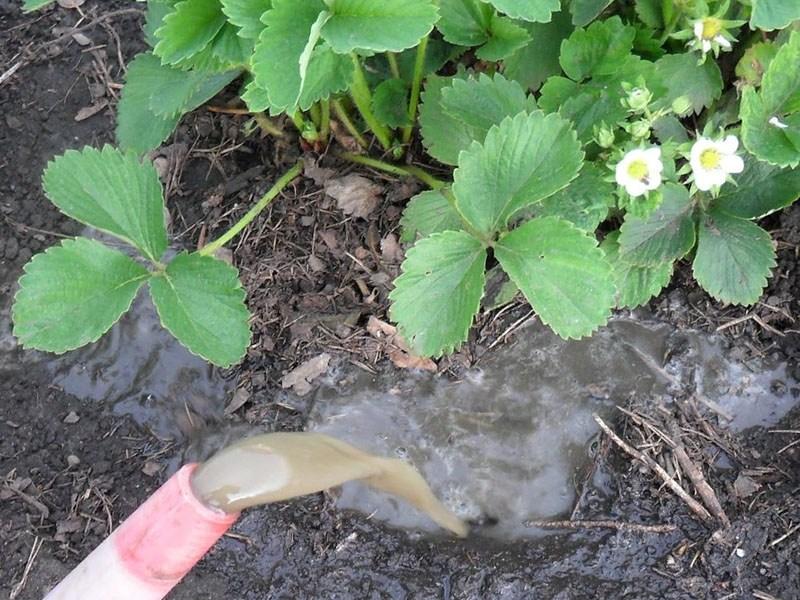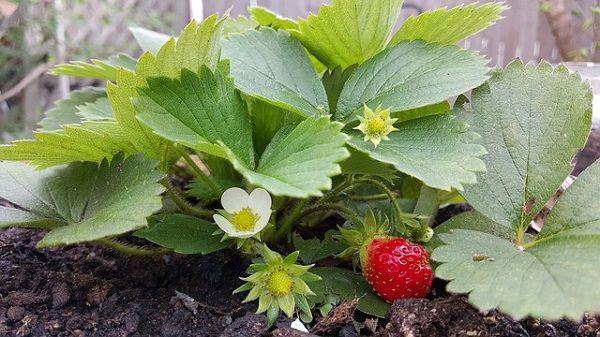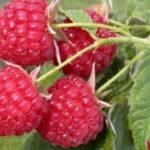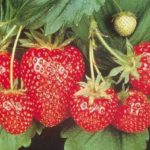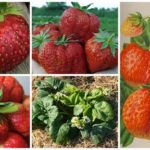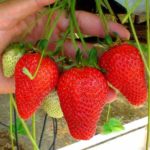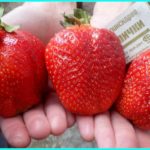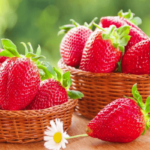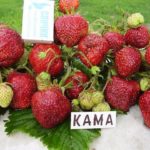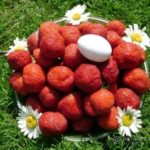When propagating bushes with mustaches, it is important to observe the timing of planting strawberry seedlings in the fall in the Middle Zone. Rosettes of plants are rooted in July, and transferred to a permanent place only at the end of August. During the fall, young bushes should take root and gain strength. After all, they have to survive a cold, long winter.
- Features of growing crops in Central Russia
- Requirements for choosing a strawberry variety
- The best early strawberries
- Sudarushka
- Elsanta
- Honey
- Darselect
- Alba
- Vima Zanta
- Popular late varieties
- San Andreas
- Kubata
- Shelf
- Large-fruited strawberry
- Kiss-Nellis
- Marvelous
- Clery
- Belrubi
- Yield varieties
- Roxana
- Symphony
- Pandora
- Marmalade
- Zenkora
- Features of agricultural technology
- When to plant strawberries in the Middle Zone
- Fertilizers
- Landing Features
- Watering
- Top dressing
- Necessary activities
- Wintering
- Disease and pest control products
Features of growing crops in Central Russia
Strawberries have long been grown in Russia, so they will easily take root on the site and survive cold winters. The main thing is not to buy a varietal crop specially bred for the southern regions. Strawberries do not like acidic and swampy soil, love sunlight and require regular feeding.
Requirements for choosing a strawberry variety
When choosing strawberries for your garden, you need to pay attention to the conditions for its cultivation. In the Middle Zone, winter-hardy varieties grow that bear fruit well in cool but rainy summers.
Different varieties have their own characteristics of planting and maintenance, different in shape, taste, and weight of the berries.
Strawberries can be early or late and bear fruit only once per season. True, remontant strawberry varieties can produce a harvest twice a year - in July and at the end of August.
Crops that bear fruit once a season tend to have large, sweet-sour berries. Early varieties are distinguished by these features. The berries can be picked from the bushes in late May and early June. Late “disposable” varieties bear fruit from July to September. These strawberries are sweeter than early ones. Remontant varieties ripen several times per season and their yield is higher. Plants bear fruit all summer.
The best early strawberries
The early-ripening crop tolerates frosty winters well, quickly revives and begins to bear fruit at the end of May. Peak yield occurs at the beginning of June.
Sudarushka
The plant has beautiful round berries of a rich burgundy color. The weight of one piece is 15-30 grams. The berries have shiny skin, juicy and sweet pulp.
Elsanta
Dutch strawberries with large, heart-shaped berries. The culture ripens at the end of May. The berries have a sweet and sour taste. The weight of one piece is 45 grams. The bush forms few rosettes and tendrils. From one plant you can harvest 1.5 kilograms of harvest.
Honey
Ripening begins at the end of May. The berries are small (weight - 40 grams), slightly sour, reddish or orange. From one bush you can harvest 0.5 kilograms of strawberries.
Darselect
Identical triangular red berries ripen on the plant in early June. They are dense and have a beautiful appearance, and retain their shape for a long time. The weight of one berry is about 50 grams.
Alba
Sweet oblong berries ripen by early June. Strawberries grow on tall, lush bushes that always bear fruit abundantly. The weight of one berry is 25 grams.
Vima Zanta
The bush has curled dark green leaves and round berries. The strawberries are not very big, but sweet. The weight of one berry is about 60 grams. From one bush you can collect 0.8 kilograms of sweet berries.
Popular late varieties
Late strawberries have a thicker skin. Such berries are sweeter than early fruits. Late-ripening strawberries have a richer color and persistent aroma.
San Andreas
This is a remontant variety that blooms and bears fruit all summer. The berries are not large, one weighs 40 grams. Strawberries ripen from June to October. From one bush you can harvest up to 1 kilogram of crop. This is a hybrid variety, it almost does not form a mustache.
Kubata
Not a remontant crop. The bush is not tall, but spreading, forms many mustaches. The berries are conical, red. One weight is 25 grams. This is a winter-hardy crop that tolerates not only frosts, but also summer drought.
Shelf
Strawberries ripen at the height of summer. The berries are round, with a blunt nose. The weight of one piece is 30-50 grams.Ripe strawberries tolerate long-term transportation well. The berries have a thick skin and a beautiful appearance.
Large-fruited strawberry
Large berries grow on large bushes. They have strong and durable peduncles. Strawberries bend very low to the ground, because the weight of one berry can reach 100 grams.
Kiss-Nellis
The berries are large, irregular in shape, and scarlet in color. The weight of one is 70-95 grams. Strawberries are very sweet and juicy. From one bush you can harvest 1.5 kilograms of harvest.
Marvelous
Ripe berries are oblong in shape, red in color, large and sweet. The weight of one is about 35 grams. From one bush you can collect 0.9 kilograms.
Clery
Sweet strawberries. She has beautiful, cone-shaped, shiny berries, like something out of a picture. The weight of one is 50 grams. The fruits are dense and can be easily transported over long distances. The variety begins to bear fruit in June.
Belrubi
The berries of this variety have an oblong neck, a conical shape, and a blunt nose. Strawberries ripen in July on tall bushes. Ripe berries have dense and sweet pulp. The weight of one is about 40 grams.
Yield varieties
Strawberries, which produce a large harvest, belong to the remontant variety. Although some non-remontant varieties bloom until July, and then quietly ripen over the course of two months. During the season, it is possible to obtain almost a kilogram of berries from such plants.
Roxana
A new variety recently bred by Italian botanists. It has tall, compact, erect bushes. The plant bears fruit abundantly. The berries are slightly oblong, identical, even and smooth. The weight of one is up to 25 grams. This variety bears fruit several times per season. From one bush it is possible to collect 1.5 kilograms of harvest.
Symphony
Strawberries bred by Scottish breeders for cultivation on an industrial scale.Ripe berries have a sweet taste, do not spoil for a long time, and can be transported over long distances. Strawberries ripen in July and bear fruit until autumn. The weight of one berry is 40 grams. From one bush you can harvest 0.8 kilograms of crop.
Pandora
This is a late hybrid strawberry that bears fruit only once a season. The berries weigh about 40 grams. For better pollination, it is advisable to plant the Vikoda variety in the neighboring bed.
Marmalade
These are berries bred by Italian breeders with a sweet taste and juicy pulp. Strawberries are dense, cone-shaped, dark cherry in color. The weight of one berry is 30 grams. From one plant you can harvest 0.75 kilograms of crop.
Zenkora
Strawberries with large berries (up to 50 grams), dense but juicy pulp. The fruits are round and irregular in shape. From one plant it is possible to collect 0.9 kilograms of berries.
Features of agricultural technology
The culture is propagated by seeds, tendrils, and division of the bush. Seedlings can be grown independently, for example, from seeds or using tendrils. It is advisable to purchase varietal crops from a nursery, along with a lump of earth and flowering cuttings. In one place, strawberries bear fruit well for 3-5 years. Then it is recommended to update the bed.
When to plant strawberries in the Middle Zone
Strawberries can be planted in spring or fall. True, those who like spring planting will receive a harvest only next year. If you plant the crop at the end of August or beginning of September, the berries will appear the following summer. A crop planted in early autumn will have time to take root well and become stronger before the onset of winter frosts.
You can propagate garden strawberries yourself by means of tendrils.To do this, one tendril with a well-developed and healthy very first rosette, without tearing it away from the mother plant, is sprinkled with earth, watered and waited until it takes root. All other antennae are removed.
When the young rosette takes root and gets stronger, the bush is cut off from the mother plant and transplanted to a new place.
The tendrils should be rooted on the side of the bed at the end of July or early August, and transplanted to a permanent place at the end of summer or early September. The mother plant should be no more than 2 years old.
Fertilizers
Before planting, the soil on which the crop will grow is dug up and loosened. The soil is fertilized with rotted humus or chicken droppings. One bucket of organic matter is added per 1 meter square plot. The soil is fertilized a month before planting the seedlings.
Be sure to add mineral supplements to the soil. To do this, dissolve 20 grams of potassium sulfate and 35 grams of superphosphate in 10 liters of water. You can reduce the acidity of the earth by adding a little wood ash (0.5 kilograms).
Landing Features
Strawberries are planted in beds where carrots, beets, radishes, parsley, and garlic used to grow. It is not advisable to plant seedlings on land where tomatoes, potatoes, cabbage, and cucumbers were once grown. The area where the strawberries will grow should be well lit by the sun and not flooded during rain. The culture loves black soil, loam and sandy loam soil, hates peat and turf soil. The earth should be slightly acidic or neutral.
Seedlings are planted on a cloudy day. Shallow holes are made in the area at a distance of 30-40 centimeters from each other (there should be a distance of 65 centimeters between the rows).A little water is poured into the holes, and then the seedlings are immersed along with a lump of earth. You can plant two plants in one hole. The roots are covered with earth, the hearts should remain at the top. After planting, the seedlings are watered.
Watering
Immediately after planting, young seedlings are watered every day. Then watering is carried out 2 times a week. The overwintered bush begins to be watered at the end of April, if the weather is not rainy. You need to ensure that the soil in the garden bed is moistened to a depth of 2 centimeters. The plant is watered twice a week during the period of fruit set and ripening.
Top dressing
Initially, when planting young seedlings, the soil is fertilized. Then the plant overwinters. In spring, the soil needs to be fertilized again. The culture needs nitrogen, potassium and phosphorus. In one season, the plant is fertilized about 4 times.
First (at the end of May) organic matter or nitrogen fertilizers are applied. 2 kilograms of rotted manure (compost) or 30 grams of urea are dissolved in 10 liters of water. In June, during the period of flower stalks, the bushes are watered with potassium and phosphorus additives (30 grams of superphosphate and 20 grams of potassium sulfate per 10 liters of water). You can use complex fertilizers (Kemira-Lux, Mortar, Kristallin).
Necessary activities
Immediately after watering or rain, the soil in the garden bed is loosened to destroy the soil crust. During weeding, weeds are removed. The area where the plants grow can be mulched with sawdust or covered with agrofibre. This technique will retain moisture in the soil and prevent the growth of weeds. After separating and transplanting the young rosettes, the mother bushes are prepared for winter.
Wintering
Before winter, the plant needs additional care.In the fall, when the old bush gives up its entire strawberry harvest, all dried leaves are removed from it. During this procedure, it is important not to damage the young leaves developing in the sinuses. All unnecessary tendrils are removed along with the leaves so that the bed does not thicken.
Before wintering, plants are subjected to preventive treatment against pests and microorganisms. The top of the bed for the winter can be covered with lutrasil, agrofibre, spunbond, or mulched with sawdust and dry straw.
Disease and pest control products
Strawberries can suffer from fusarium wilt, gray rot, powdery mildew, brown spot, and white spot. Copper sulfate and Bordeaux mixture are used for prevention and treatment. The remedy Teldor or Euparen saves the plant from rotting. To prevent powdery mildew, bushes are sprayed with a solution containing Topaz or Bayleton.
Strawberry pests: nematodes, ants, slugs, aphids, beetles, mites, weevils, birds. Affected leaves and berries are removed from the garden. The remaining bushes are sprayed with Karbofos solution, Iskra and Actellik preparations.

